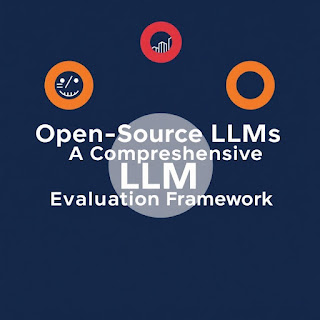Open-Source LLMs: A Comprehensive Evaluation Framework
The rapid advancement of Large Language Models (LLMs) has sparked excitement in the tech community. However, with this progress comes a pressing need for standardized evaluation methods. Without a common framework, developers cannot accurately measure and improve LLMs. This lack of clarity hinders growth and can lead to skepticism about the technology.
Existing evaluation methods often fall short. They may focus solely on metrics like accuracy, ignoring aspects like fluency or bias. This gap affects the overall development of LLMs and can mislead users about their true performance. Open-source evaluation frameworks can bridge this divide by promoting trust and transparency in the evaluation process.
Key Features of an Effective Open-Source LLM Evaluation Framework
To evaluate LLMs properly, certain key features must be present:
Defining Key Evaluation Metrics
- Accuracy: Measures how often a model's predictions are correct.
- Fluency: Evaluates how natural and coherent the generated text is.
- Bias: Identifies unfairness or prejudices within the model's outputs.
Establishing a Standardized Benchmark Dataset
A good evaluation framework should use a well-defined benchmark dataset. This dataset must include diverse examples and real-world scenarios to test the model's versatility.
Ensuring Reproducibility and Transparency
By utilizing open-source methods, evaluation processes become replicable. This openness allows others in the community to verify results, fostering greater confidence in the outcomes.
Popular Open-Source LLM Evaluation Frameworks: A Comparative Analysis
Several frameworks are available for LLM evaluation, each with its strengths and weaknesses:
Overview of Existing Frameworks
- Hugging Face’s Transformers: Offers a wide range of tools but can be complex for beginners.
- EleutherAI’s GPT-Neo: Focuses on community-driven models but lacks extensive support documentation.
- OpenAI's GPT-2: Provides robust evaluation tools but may be limited to its own model family.
Case Study: Analyzing Performance Across Frameworks
When comparing a specific LLM, such as GPT-3, across different frameworks, you may observe varying performance metrics. For instance, in accuracy tests, one framework may show high scores, while another emphasizes fluency, leading to different interpretations of the same model.
Comparison Table Highlighting Key Features
| Framework | Strengths | Weaknesses | Best For |
|---|---|---|---|
| Hugging Face | Comprehensive tools | Complexity | Versatile LLM applications |
| EleutherAI | Community-driven | Limited documentation | Experimentation |
| OpenAI's GPT-2 | User-friendly | Model-limited | Specific model evaluation |
Building Your Own Open-Source LLM Evaluation Framework
Creating a custom evaluation framework can be rewarding. Here’s how:
Step-by-Step Guide to Setting Up
- Select a Programming Language: Popular choices include Python or JavaScript.
- Install Required Libraries: Use packages like TensorFlow or PyTorch.
- Create Evaluation Scripts: Write scripts to automate the evaluation process.
Selecting Appropriate Metrics and Datasets
Identify evaluation metrics that align with your goals. Choose datasets that reflect real-world usage and include a variety of scenarios.
Implementing Robust Evaluation Pipelines
Develop evaluation pipelines that allow for efficient data processing. This not only speeds up evaluation but also ensures reliable results.
Addressing Ethical Considerations in LLM Evaluation
Ethics play a crucial role in LLM evaluation:
Bias Detection and Mitigation Strategies
Incorporate techniques to identify and reduce bias in your LLM. This can involve using balanced datasets and employing fairness metrics.
Importance of Data Privacy and Security
Ensure that your evaluation methods respect user privacy. Proper data handling and security protocols should be in place.
Promoting Responsible AI Development
Transparent evaluation practices help to foster responsible AI development. By sharing methods and results openly, developers contribute to the overall integrity of LLM technology.
The Future of Open-Source LLM Evaluation
Looking ahead, community engagement will be vital for improving existing frameworks.
Role of Community Contributions
Open-source projects benefit from diverse contributions. Developers can enhance frameworks by sharing insights and tools.
Exploring New Evaluation Methods
As LLM capabilities grow, new evaluation techniques will emerge. This will require continuous adaptation in how we measure performance.
Predicting Impact on Development and Deployment
Standardized evaluation methods can lead to more reliable LLMs. This will boost confidence among developers and users alike, encouraging broader adoption of LLM technologies.
Conclusion: Towards a More Robust and Transparent LLM Ecosystem
In a fast-evolving field, establishing a solid open-source LLM evaluation framework is essential. As standardization takes hold, the trustworthiness and overall quality of LLMs will improve. By embracing community-driven contributions and focusing on ethical practices, the future of LLM evaluation looks promising. Now is the time to engage with open-source frameworks and push LLM development forward.


.jpeg)
